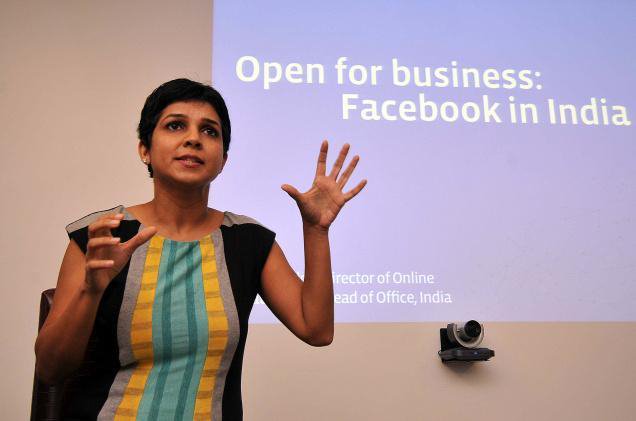Vision. Big visions and aspirational goals attract energy, make the energy contagious and inspire action. A critical part of leadership is defining a bold vision for the company, organization and team; articulating the vision; fostering an environment where people make the vision their own; and keeping it at the forefront in all that we do. My natural style gravitates to the ‘get things done’ action-orientation. I have to constantly remind myself not to assume that the vision has been internalized by all, and remember that talking about the ‘why’ we are (or are not) doing something is often more important than the ‘what’. In addition to defining what we will do, it is critical that we also identify goals we will not spend time on, to make sure we are focused on the highest priority goals and not stretching ourselves too thin – these are called NOT goals. Make setting ‘NOT’ goals a part of the regular visioning and goal-setting process. These NOT goals are not areas that you would not do anyways. They are usually areas that are fantastic things to do when evaluated in isolation but not the best and highest-impact thing to do, all things considered. For example, when we started our sales support and marketing focus in India, we focused on three key verticals: eCommerce, FMCG, and Tech & Telco. Other verticals such as Financial Services were also full of opportunity, but we need to sharply focus on a few key verticals, demonstrate success, and then pick up new verticals like Financial Services (our NOT goal in the initial phase), which we have since done.
It’s all about people. Once the vision is in place, it’s all about people. When business goals are aligned to getting the right people in the right positions; understanding what forces drive them; their careers goals and personal aspirations—that’s when magic happens. Even when we cannot align do things that are completely aligned to each person on the team, it is critical to be directionally aligned. Research shows that the answer to the question ‘Do you have the opportunity to do what you do best every day?’ is one of the biggest drivers of employee satisfaction and productivity. As leaders, it is important to prioritize people related items —hiring the best, developing the best, recognizing the best, regular one-on-one sessions focused on learning goals and career aspirations.
Execution Discipline. ‘Say what you are going to do. Do what you say. Close the loop.’ I am constantly astounded by how something that sounds so simple can be so hard for people to do in practice. As leaders, it is essential that we help build execution skills in the organization. This breaks down into helping people understand what ‘done’ means (for example, shipping the first draft of a presentation may mean ‘done’ to someone, while it may mean ‘presentation is reviewed, feedback incorporated and ready to ship externally’ to someone else), agreeing on interim milestones to track and holding a high bar on accountability. Assess the execution quotient of your organization and invest in the skills, culture and processes to create a high-performance team with flawless execution capabilities. I urge every leader or aspirant to really invest in building this execution muscle—prioritization, follow-through and communication. This could make the difference between a good career and a great one.
Give people the power of Voice. Stephen Covey talks about Voice as the eighth habit of highly effective people. Jack Welch talks about the importance of candor in his book, Winning. This reflects itself in values like ‘Be Open’, ‘Be Bold’, ‘Move Fast’, and small bytes of real-time feedback. It embodies the spirit that one has to want to make a difference or cause a change than one thinks possible. If I had to pick one attribute that has particularly led to my growth as a leader, it’s about having the confidence to use my Voice (fueled by the conviction that I am driven by the success of my clients, organization and team—i.e., it is not aboutme); and focusing on creating a culture of empowering others to use their Voice. Investments in understanding personality traits (using tools like Colors, Myers Briggs) are importance aspects of giving people the power of Voice. We also need to build a capacity for taking risks and encouraging failures. If we aren’t making mistakes, we aren’t trying hard enough. We just need to learn from mistakes and iterate rapidly.
Communicate. Communicate. Communicate. Gone are the days of one-way, top-down communication. A leader today is increasingly accessible. At Facebook, the one way this is reflected is in our office spaces where everyone sits in an open floor. There are no cubicles, no offices for anyone including Mark Zuckerberg, our founder and CEO, and Sheryl. Personally, I love a space that’s at the center of the office so I get a sense of the flow of information and ideas; and am physically easily accessible. Other practices include office hours where anyone in the company can sign up for a quick informal chat, skip-level meetings and mentors, replicating the open Q&A session Mark does every Friday for the company at a country level and Facebook tribes like ‘Ask Kirthiga’ (a forum[P16] conceived and created by one of our analysts). In addition to the accessibility of communication, leaders need to invest in building their own communication skills—a skill I believe is one that no one should ever stop working on, no matter how good they are. Conciseness, clarity and conviction are key aspects of communication. I work with mentors and coaches—both formal and informal, external and internal—on continually raising the bar on my communication skills.
Being a leader is a privilege. A responsibility. Cherish it. Enjoy it. Deliver on the promise of being a leader to ‘Change lives. Change organizations. Change the world.’—a tagline from Stanford Business School that is deeply ingrained in me.








